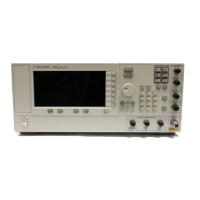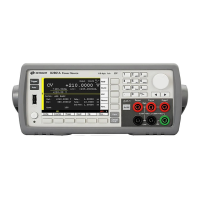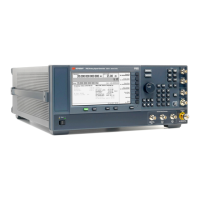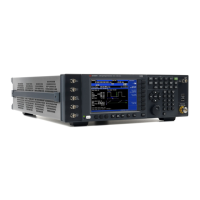Remote Interface Reference 4
Keysight 33210A User’s Guide 285
Command Format Used in This Manual
The format used to show commands in this manual is illustrated below:
FREQuency {<frequency>|MINimum|MAXimum}
The command syntax shows most commands (and some parameters) as a mixture
of upper- and lower-case letters. The upper-case letters indicate the abbreviated
spelling for the command. For shorter program lines, you can send the
abbreviated form. For better program readability, you can send the long form.
For example, in the above syntax statement, FREQ and FREQUENCY are both
acceptable forms. You can use upper- or lower-case letters. Therefore,
FREQUENCY, freq, and Freq are all acceptable. Other forms, such as FRE and
FREQUEN, will generate an error.
–
Braces
( { } ) enclose the parameter choices for a given command string
. The
braces are not sent with the command string.
–A vertical bar ( | ) separates multiple parameter choices for a given command
string.
– Triangle brackets ( < > ) indicate that you must specify a value for the enclosed
parameter. For example, the above syntax statement shows the frequency
parameter enclosed in triangle brackets. The brackets are not sent with the
command string. You must specify a value for the parameter (such as "FREQ
5000").
–
Some parameters are enclosed in
square brackets
( [ ] ). The square brackets
indicate that the parameter is optional and can be omitted. The brackets are
not sent with the command string. If you do not specify a value for an optional
parameter, the function generator chooses a default value.
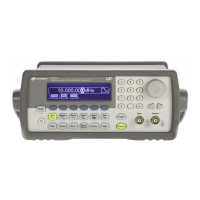
